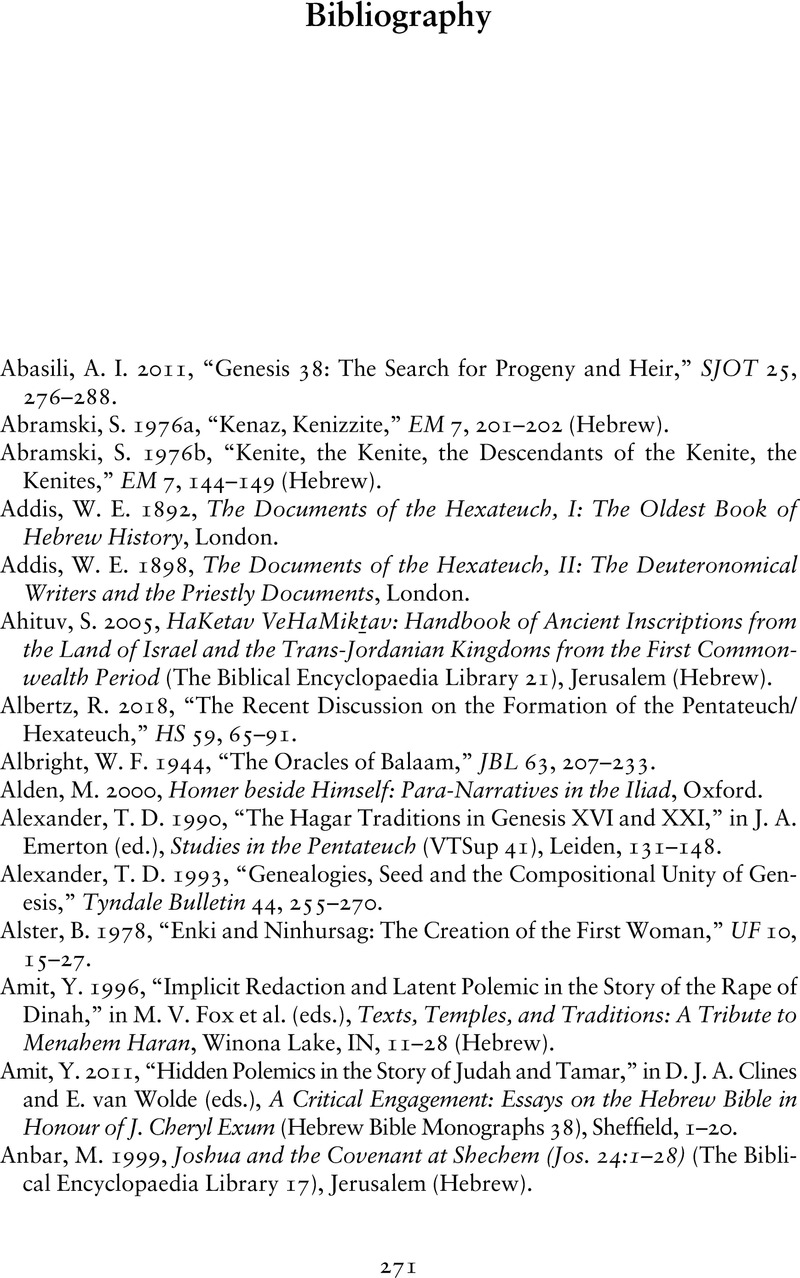Book contents
- Stories of Origins in the Bible and Ancient Mediterranean Literature
- Stories of Origins in the Bible and Ancient Mediterranean Literature
- Copyright page
- Contents
- Figures
- Maps
- Preface
- Abbreviations
- Introduction
- Part I After the Flood and Before It
- Part II From Man to Nation: Literary Patterns
- Bibliography
- Index of Sources
- Index of Names and Places
- References
Bibliography
Published online by Cambridge University Press: 23 December 2023
- Stories of Origins in the Bible and Ancient Mediterranean Literature
- Stories of Origins in the Bible and Ancient Mediterranean Literature
- Copyright page
- Contents
- Figures
- Maps
- Preface
- Abbreviations
- Introduction
- Part I After the Flood and Before It
- Part II From Man to Nation: Literary Patterns
- Bibliography
- Index of Sources
- Index of Names and Places
- References
Summary

- Type
- Chapter
- Information
- Publisher: Cambridge University PressPrint publication year: 2023



